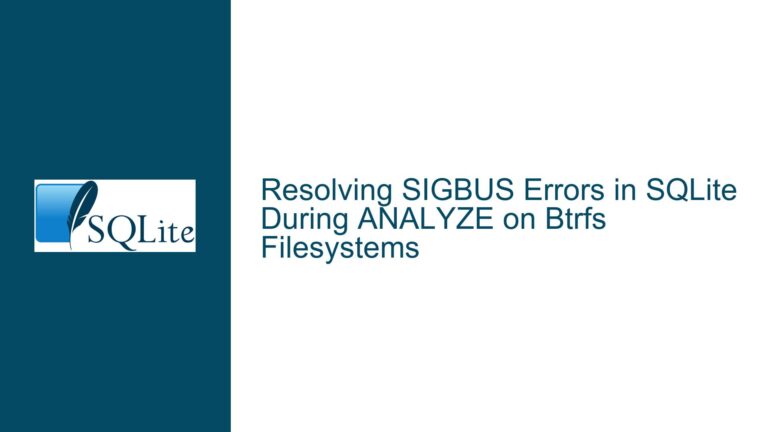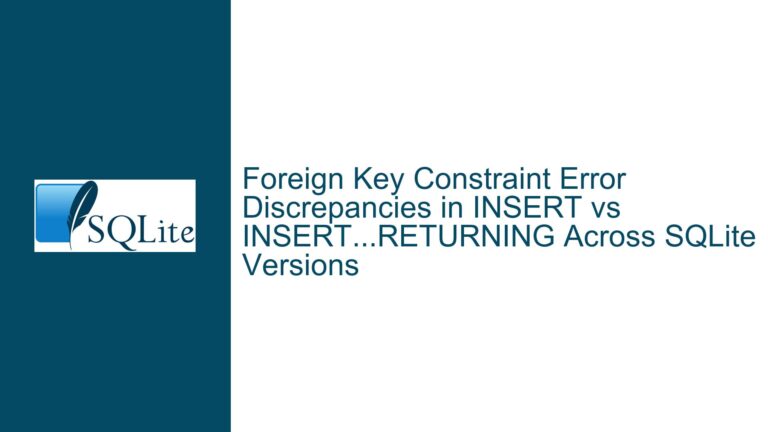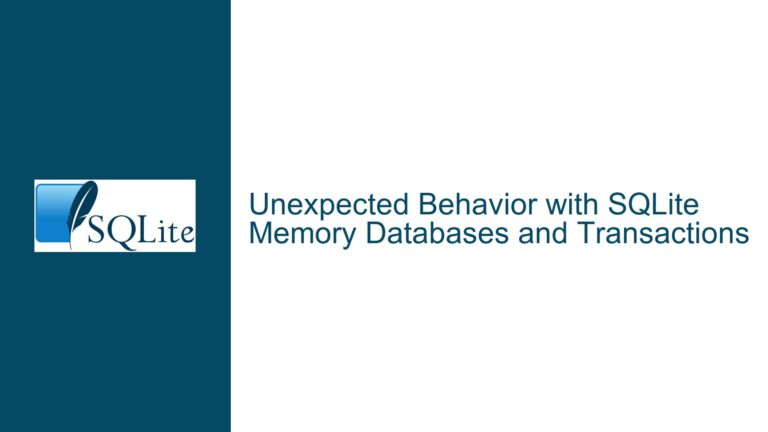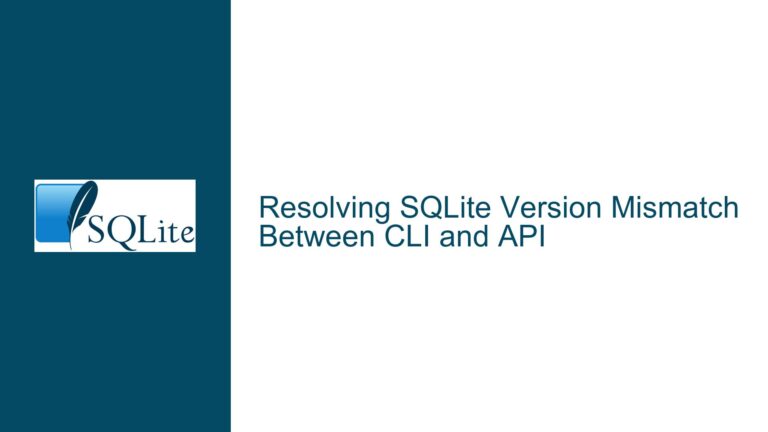SQLite in WASM: Challenges and Solutions for Web Integration
SQLite in WebAssembly (WASM) for Production Environments
SQLite in WebAssembly (WASM) is an emerging technology that allows SQLite to run directly in web browsers, enabling offline-capable web applications with local database functionality. This approach is particularly promising for production environments like Facebook products, where performance, reliability, and scalability are critical. However, integrating SQLite into WASM introduces unique challenges, particularly around performance, storage, and compatibility with web technologies like IndexedDB.
The primary advantage of using SQLite in WASM is its ability to provide a fully functional SQL database within the browser, enabling applications to store and query data locally without relying on server-side databases. This is especially useful for applications that require offline functionality or need to reduce latency by minimizing server round-trips. However, the integration of SQLite into WASM is not without its complexities. The browser environment imposes limitations on storage, file system access, and threading, which can impact the performance and reliability of SQLite in WASM.
One of the key challenges is the use of IndexedDB as the backing store for SQLite in WASM. IndexedDB is a low-level API for storing significant amounts of structured data, including files and blobs, in web browsers. While IndexedDB provides a persistent storage mechanism, it is not designed to handle the transactional consistency and performance requirements of a full-fledged SQL database like SQLite. This mismatch can lead to issues such as slow write operations, data corruption, and limited scalability.
Another challenge is the performance overhead of running SQLite in WASM. WebAssembly is designed to provide near-native performance for web applications, but the translation of SQLite’s C code to WASM can introduce inefficiencies. These inefficiencies are particularly noticeable in high-throughput scenarios, where the database is required to handle a large number of concurrent read and write operations. Additionally, the lack of direct file system access in the browser environment forces SQLite to rely on virtual file systems or custom storage solutions, which can further impact performance.
Despite these challenges, SQLite in WASM holds significant promise for web applications. By leveraging the strengths of SQLite—such as its lightweight design, ACID compliance, and ease of use—developers can build powerful, offline-capable web applications that deliver a seamless user experience. However, to fully realize this potential, it is essential to address the challenges associated with integrating SQLite into WASM, particularly around storage, performance, and compatibility with web technologies.
Performance Bottlenecks and Storage Limitations in WASM
The integration of SQLite into WebAssembly (WASM) introduces several performance bottlenecks and storage limitations that can impact the overall functionality and reliability of web applications. One of the primary performance bottlenecks is the translation of SQLite’s C code to WASM. While WebAssembly is designed to provide near-native performance, the process of converting C code to WASM can introduce inefficiencies, particularly in high-throughput scenarios where the database is required to handle a large number of concurrent read and write operations.
Another significant performance bottleneck is the lack of direct file system access in the browser environment. In traditional environments, SQLite relies on the underlying file system to store and manage database files. However, in the browser environment, direct file system access is not available, forcing SQLite to rely on virtual file systems or custom storage solutions. These alternatives can introduce additional layers of abstraction, which can impact performance and increase the complexity of the database operations.
Storage limitations are another critical challenge when using SQLite in WASM. The browser environment imposes strict limits on the amount of data that can be stored locally, which can restrict the size and scalability of the database. Additionally, the use of IndexedDB as the backing store for SQLite in WASM introduces further limitations. IndexedDB is designed to store structured data, but it is not optimized for the transactional consistency and performance requirements of a full-fledged SQL database like SQLite. This can lead to issues such as slow write operations, data corruption, and limited scalability.
The performance bottlenecks and storage limitations associated with SQLite in WASM can have a significant impact on the overall functionality and reliability of web applications. In high-throughput scenarios, the inefficiencies introduced by the translation of SQLite’s C code to WASM can lead to slow query execution times and increased latency. Additionally, the lack of direct file system access and the limitations of IndexedDB can restrict the size and scalability of the database, making it difficult to handle large datasets or support a high number of concurrent users.
To address these challenges, developers need to carefully optimize the performance of SQLite in WASM and explore alternative storage solutions that can provide better performance and scalability. This may involve using custom storage solutions that are optimized for the browser environment, or leveraging other web technologies that can provide better support for transactional consistency and high-throughput operations. Additionally, developers should consider the trade-offs between performance and storage limitations when designing their applications, and explore ways to minimize the impact of these limitations on the overall user experience.
Optimizing SQLite in WASM with IndexedDB and Custom Storage Solutions
Optimizing SQLite in WebAssembly (WASM) for web applications requires a combination of techniques to address the performance bottlenecks and storage limitations associated with the browser environment. One of the key areas of focus is the use of IndexedDB as the backing store for SQLite in WASM. While IndexedDB provides a persistent storage mechanism, it is not optimized for the transactional consistency and performance requirements of a full-fledged SQL database like SQLite. To overcome these limitations, developers can implement custom storage solutions that are optimized for the browser environment and provide better support for high-throughput operations.
One approach to optimizing SQLite in WASM is to implement a custom virtual file system that is designed to work with IndexedDB. This virtual file system can provide a layer of abstraction between SQLite and IndexedDB, allowing SQLite to perform file system operations as if it were running in a traditional environment. By optimizing the virtual file system for the browser environment, developers can reduce the performance overhead associated with the translation of SQLite’s C code to WASM and improve the overall performance of the database.
Another approach is to leverage other web technologies that can provide better support for transactional consistency and high-throughput operations. For example, developers can use Service Workers to cache database operations and reduce the latency associated with read and write operations. Additionally, developers can use Web Workers to offload database operations to a separate thread, reducing the impact of these operations on the main thread and improving the overall responsiveness of the application.
In addition to optimizing the storage and performance of SQLite in WASM, developers should also consider the trade-offs between performance and storage limitations when designing their applications. For example, developers can implement data partitioning strategies to distribute the database across multiple IndexedDB instances, reducing the impact of storage limitations on the overall scalability of the database. Additionally, developers can implement data compression techniques to reduce the size of the database and minimize the impact of storage limitations on the overall performance of the application.
To further optimize SQLite in WASM, developers can also explore the use of custom indexing strategies that are optimized for the browser environment. For example, developers can implement custom indexes that are designed to work with the specific data access patterns of their application, reducing the overhead associated with query execution and improving the overall performance of the database. Additionally, developers can implement caching strategies to reduce the latency associated with read operations and improve the overall responsiveness of the application.
Finally, developers should consider the use of database backup and recovery strategies to ensure the reliability and integrity of the database in the event of a failure. For example, developers can implement periodic backups of the database to IndexedDB, ensuring that the data can be recovered in the event of a crash or data corruption. Additionally, developers can implement data validation and integrity checks to ensure that the data stored in the database is consistent and accurate.
In conclusion, optimizing SQLite in WASM for web applications requires a combination of techniques to address the performance bottlenecks and storage limitations associated with the browser environment. By implementing custom storage solutions, leveraging other web technologies, and optimizing the performance of the database, developers can build powerful, offline-capable web applications that deliver a seamless user experience. Additionally, by considering the trade-offs between performance and storage limitations and implementing database backup and recovery strategies, developers can ensure the reliability and integrity of the database in the event of a failure.






